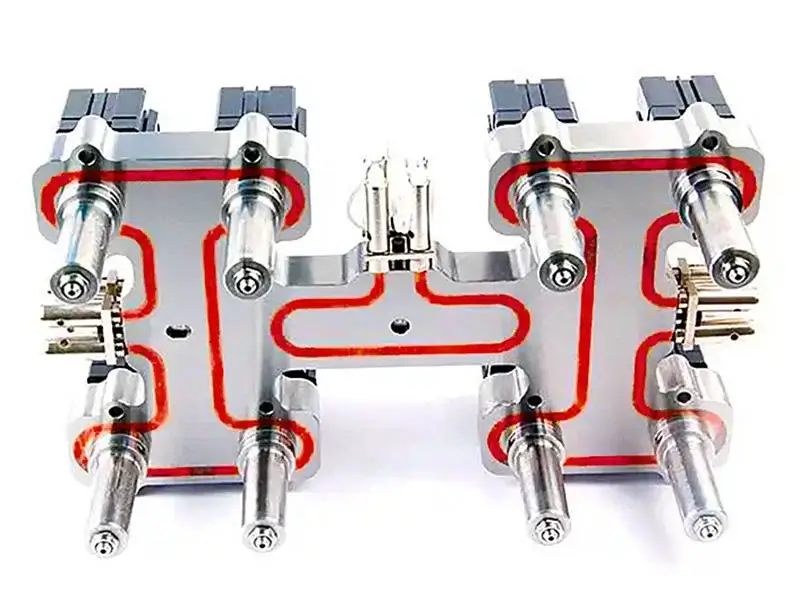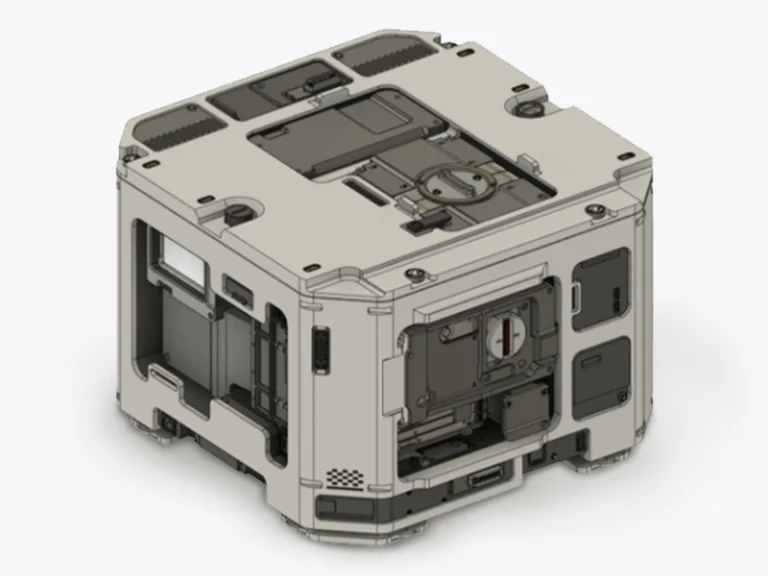Backpressure in the injection molding process refers to the pressure exerted on the molten material in the barrel during the injection phase, opposing the forward flow of the material into the mold. Backpressure plays a pivotal role in maintaining the integrity of the molded parts. In the next sections, we will delve deeper into the concept of backpressure, exploring its effects on the injection molding process and strategies for its effective management.
What Is Backpressure in Injection Molding?
Backpressure in injection molding refers to the hydraulic resistance applied to the molten material within the barrel of the injection molding machine. It is exerted by the injection unit against the forward movement of the material, typically achieved by applying pressure to the screw or plunger. This resistance helps to regulate the flow of the molten material and facilitate various critical processes during injection.
Role of Backpressure in Injection Molding
Backpressure in injection molding has a profound impact on melt homogeneity, prevention of unmelted polymer, and enhancement of part quality and appearance.
The Role of Backpressure on Melt Homogeneity:
Backpressure plays a crucial role in promoting melt homogeneity by facilitating the thorough mixing and blending of the molten material within the barrel.
Proper backpressure helps to ensure uniformity in temperature, composition, and viscosity throughout the material. This uniformity enhances the consistency of properties across the molded part, resulting in improved mechanical performance, appearance, and dimensional stability.
The Role of Backpressure on Polymer Melting
Insufficient backpressure can lead to inadequate melting of the polymer pellets within the barrel, resulting in the presence of unmelted or partially melted material in the molded parts. The unmelted polymer can cause defects such as flow lines, voids, or surface irregularities, compromising the structural integrity and aesthetics of the finished product.
Proper application of backpressure ensures thorough melting and mixing of the polymer, minimizing the risk of unmelted material and promoting uniform flow and fill in the mold cavity.
Backpressure Impact On Part Quality and Appearance:
Backpressure significantly influences the quality and appearance of the molded parts. By promoting melt homogeneity and preventing unmelted polymer, proper backpressure control helps to minimize defects such as sink marks, warpages, or surface imperfections.
Parts molded with optimized backpressure settings exhibit smoother surfaces, sharper details, and more consistent dimensions, enhancing their overall quality and aesthetic appeal.
Additionally, uniform melt distribution achieved through backpressure control improves the mechanical properties and performance characteristics of the molded parts, such as strength, stiffness, and impact resistance. By understanding and controlling backpressure effectively, manufacturers can optimize the injection molding process to achieve superior part quality, consistency, and performance.
How Does Backpressure Affect the Quality of Injection Molded Parts?
Backpressure plays a crucial role in determining the quality of injection molded parts. Proper control and optimization of backpressure are essential for achieving consistent and high-quality molded products. Here’s how backpressure affects the quality of injection molded parts:
- Melt Density and Compaction: Adequate backpressure helps to compact and densify the molten plastic material within the barrel, increasing its density. This results in improved injection volume, part weight, and dimensional stability of the molded parts.
- Air Entrapment and Surface Defects: Appropriate backpressure can “squeeze out” trapped air bubbles and gases from the melt. This reduces the formation of air blooms, internal bubbles, and surface defects like splay marks, improving the overall appearance and surface finish of the parts.
- Color and Additive Dispersion: Backpressure slows down the screw retreat speed, allowing for better mixing and uniform dispersion of colorants, masterbatches, and fillers within the melt. This helps to avoid color mixing issues and ensures consistent coloring throughout the molded part.
- Shrinkage and Knit Lines: Proper backpressure can improve the shrinkage behavior of the molded parts, reducing surface sink marks and knit lines. It also enhances the flow of the melt into the mold cavity, minimizing glue-like residues around the part.
- Melt Homogeneity and Fluidity: Adequate backpressure increases the melt temperature and improves the plasticization quality. This results in better melt homogeneity and enhanced fluidity, allowing for complete filling of the mold cavity and reducing the risk of short shots or incomplete parts.
How to Set Proper Backpressure in Injection Molding?
Setting proper backpressure in injection molding is essential for achieving optimal part quality, consistency, and production efficiency. Here’s a guide on how to set proper backpressure:
Learn Recommended Backpressure Range:
The typical recommended range for backpressure in injection molding is:
500-1000 psi (3-7 MPa) of specific pressure
Things to Consider When Setting Backpressure
- Material Properties: Adjust backpressure based on the viscosity, thermal sensitivity, and presence of fillers/additives in the plastic material. Higher back pressure may be needed for highly viscous materials. Lower backpressure is recommended for temperature-sensitive materials to prevent degradation. Filled materials like glass fibers may require lower back pressure to avoid fiber breakage.
- Part Design: More complex part designs with thick walls, long flow paths, or intricate features may require higher backpressure to ensure complete mold filling and uniform melt distribution.
- Machine Capabilities: Consider the injection molding machine’s screw design, barrel size, and drive system when setting backpressure. Machines with higher plasticizing capacities may require higher backpressure settings.
- Drying Conditions: Properly dried materials may require lower backpressure compared to materials with higher moisture content.
Adjustment and Optimization Backpressure Based on Molded Parts
- Start with a low backpressure setting, typically around 50 psi, and increase in increments of 10-50 psi until the desired part quality is achieved.
- Monitor part quality indicators like surface defects, color mixing, shrinkage, and weight/dimensional variations. Adjust backpressure accordingly.
- Excessive backpressure can lead to material degradation, nozzle drooling, discoloration, and increased wear on machine components. Reduce backpressure if these issues occur.
- Perform trial runs and continuously optimize backpressure settings based on part quality, material behavior, and machine performance.
- In summary, setting the proper backpressure in injection molding requires careful consideration of material properties, part design, machine capabilities, and drying conditions. Start with a low setting and incrementally adjust while monitoring part quality.
Common Backpressure Issues and Troubleshooting
Excessive Backpressure:
Symptoms:
Excessive backpressure can manifest in various ways, including increased screw torque, elevated melt temperature, and decreased material flow rate. It may also lead to excessive shear heating, material degradation, or premature wear of machine components.
Causes:
- Overcompensation for poor material flow or inadequate melt homogeneity.
- Incorrect machine settings or process parameters.
- Blockages or restrictions in the nozzle, barrel, or screw flights.
Troubleshooting Tips:
- Gradually reduce backpressure settings while monitoring melt quality and process stability.
- Check for and remove any blockages or obstructions in the injection unit, including the nozzle, barrel, or screw.
- Adjust other process parameters, such as screw speed, injection pressure, or barrel temperature, to optimize material flow and melt homogeneity.
- Verify material compatibility and viscosity to ensure proper processing conditions.

Flash Caused by Excessive Backpressure
Insufficient Backpressure:
Symptoms:
Insufficient backpressure can result in poor melt homogeneity, unmelted polymer, or inadequate material flow and packing in the mold cavity. It may also lead to defects such as voids, bubbles, or sink marks in the molded parts.
Causes:
- Inadequate mixing or blending of the molten material within the barrel.
- Improper machine settings or process parameters.
- Material or additive characteristics affecting melt viscosity or flow behavior.
Troubleshooting Tips:
- Gradually increase backpressure settings while monitoring melt quality and process stability.
- Ensure proper material drying and conditioning to prevent moisture or contamination issues that could affect melt quality.
- Adjust screw design or configuration to improve mixing and dispersion of additives or fillers.
- Optimize barrel temperature profiles to achieve proper melt viscosity and flow characteristics.

Flow Marks Caused By Insufficient Backpressure
Troubleshooting Tips for Resolving Backpressure-Related Problems:
- Conduct regular maintenance and cleaning of the injection unit components, including the nozzle, barrel, screw, and non-return valve, to prevent blockages or wear.
- Monitor process variables, such as melt temperature, pressure profiles, screw RPM, and shot size, to identify any deviations from optimal conditions.
- Utilize process monitoring tools and sensors to track melt quality, machine performance, and part quality throughout the molding cycle.
- Train operators on proper machine setup, operation, and troubleshooting techniques to address backpressure-related issues effectively.
Conclusion
In conclusion, backpressure in injection molding is a critical parameter. By understanding the role of backpressure and implementing precise control strategies, manufacturers can optimize part quality, consistency, and production efficiency in injection molding operations. Cooperate with experienced manufacturers and produce high-quality, consistent, and cost-effective plastic components for a wide range of applications.




